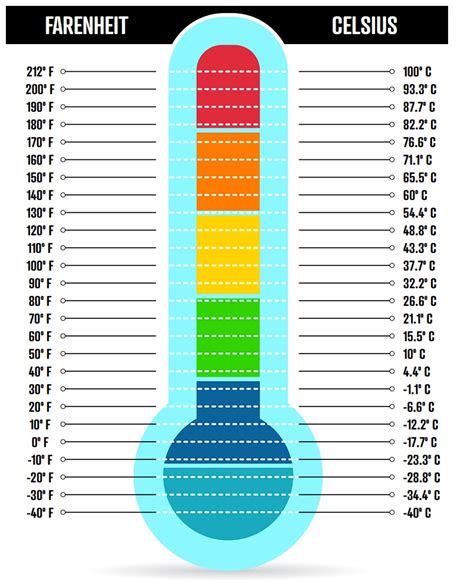Cuanto Es 50 Grados Fahrenheit En Centigrados
Kalali
Mar 29, 2025 · 4 min read

Table of Contents
Converting Fahrenheit to Celsius: Understanding 50 Degrees Fahrenheit in Centigrade
The question, "cuanto es 50 grados fahrenheit en centigrados?" (how much is 50 degrees Fahrenheit in Celsius?) is a common one, particularly for those living in regions that use both Fahrenheit and Celsius scales. Understanding the conversion process is crucial for navigating daily life, interpreting weather reports, and even cooking. This comprehensive guide will delve into the conversion, explore the history of both temperature scales, discuss the differences, and offer practical applications.
Understanding Fahrenheit and Celsius
Before diving into the conversion of 50 degrees Fahrenheit to Celsius, let's briefly review the two temperature scales:
-
Fahrenheit (°F): Developed by Daniel Gabriel Fahrenheit in the early 18th century, this scale sets the freezing point of water at 32°F and the boiling point at 212°F, with 180 degrees separating the two. It's predominantly used in the United States and a few other countries.
-
Celsius (°C): Also known as the centigrade scale, it was developed by Anders Celsius in the 18th century. This scale sets the freezing point of water at 0°C and the boiling point at 100°C, with 100 degrees separating them. It's the most widely used temperature scale globally and is the standard system in scientific contexts.
The Conversion Formula: Fahrenheit to Celsius
The formula for converting Fahrenheit to Celsius is:
°C = (°F - 32) × 5/9
Let's apply this to our question: cuanto es 50 grados fahrenheit en centigrados?
°C = (50°F - 32) × 5/9 = 18 × 5/9 = 10°C
Therefore, 50 degrees Fahrenheit is equal to 10 degrees Celsius.
A Step-by-Step Guide to Converting 50°F to °C
To make the conversion clearer, let's break it down step-by-step:
-
Subtract 32: Start by subtracting 32 from the Fahrenheit temperature (50°F - 32 = 18).
-
Multiply by 5: Multiply the result from step 1 by 5 (18 × 5 = 90).
-
Divide by 9: Finally, divide the result from step 2 by 9 (90 ÷ 9 = 10).
The final answer is 10°C.
Practical Applications of the Conversion
Understanding the conversion between Fahrenheit and Celsius is crucial in various aspects of daily life:
-
Weather Forecasting: Interpreting weather reports requires understanding both scales, especially when traveling internationally. Knowing that 50°F is a relatively cool temperature (10°C) helps in planning clothing and activities.
-
Cooking and Baking: Many recipes, especially those from different countries, may use either Fahrenheit or Celsius. Accurate conversion ensures the perfect outcome for your culinary creations.
-
Healthcare: Body temperature, medication storage, and other medical parameters often require temperature readings in both scales. Accurate conversion is essential for proper medical care.
-
Science and Engineering: Across numerous scientific fields and engineering disciplines, accurate temperature measurement is critical. The ability to convert between Fahrenheit and Celsius is essential for data interpretation and analysis.
-
Travel and Tourism: Traveling to different countries necessitates understanding the local temperature units to properly pack and prepare for varying climate conditions. Knowing the equivalent Celsius temperature for Fahrenheit readings helps in planning for comfort and safety.
Beyond the Conversion: Understanding Temperature Scales in Context
While the conversion formula provides a straightforward answer to "cuanto es 50 grados fahrenheit en centigrados?", it's essential to understand the scales within a broader context. Consider these points:
-
Scale Differences: The difference in scale size (180 degrees vs. 100 degrees) affects how temperature changes are perceived. A 1°F change is smaller than a 1°C change.
-
Historical Context: Understanding the historical development of each scale adds depth to its usage. Knowing that Fahrenheit originated from experiments using brine and ice helps in appreciating its historical significance.
-
Global Usage: The widespread adoption of Celsius worldwide points to its superiority in scientific and international communication. While Fahrenheit remains prominent in specific regions, the global shift towards Celsius reflects its practical advantages.
Alternative Methods for Conversion
While the formula is the most accurate method, several online tools and apps readily convert Fahrenheit to Celsius and vice versa. These resources provide a quick and convenient method for those who prefer not to manually perform calculations. However, understanding the underlying formula enhances comprehension and builds essential mathematical skills.
Conclusion: Mastering Fahrenheit and Celsius Conversions
Learning to convert between Fahrenheit and Celsius empowers you to navigate the world's diverse temperature systems. By understanding the conversion formula, its step-by-step application, and the contextual significance of each scale, you'll be well-equipped to handle temperature-related information effectively. The answer to "cuanto es 50 grados fahrenheit en centigrados?" – 10°C – is only the beginning of a deeper understanding of the fascinating world of thermometry. This knowledge proves valuable in various fields, from daily life decisions to scientific endeavors, ensuring accurate interpretation and efficient problem-solving. Remember to use this knowledge responsibly and continue exploring the exciting world of temperature conversions.
Latest Posts
Latest Posts
-
What Is 19 Inches In Cm
Mar 31, 2025
-
How Many Ounces Is 2 2 3 Cups
Mar 31, 2025
-
How Many Oz Is One Liter Of Water
Mar 31, 2025
-
Cuanto Es El 25 De 100
Mar 31, 2025
-
How Long Is 120cm In Inches
Mar 31, 2025
Related Post
Thank you for visiting our website which covers about Cuanto Es 50 Grados Fahrenheit En Centigrados . We hope the information provided has been useful to you. Feel free to contact us if you have any questions or need further assistance. See you next time and don't miss to bookmark.
